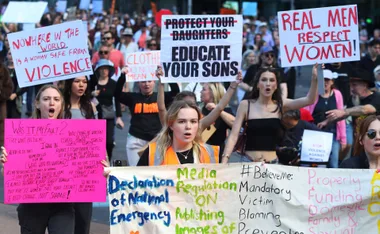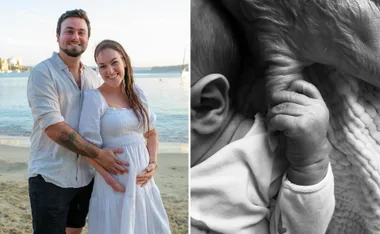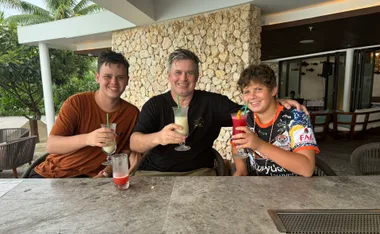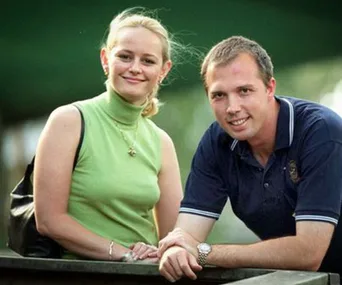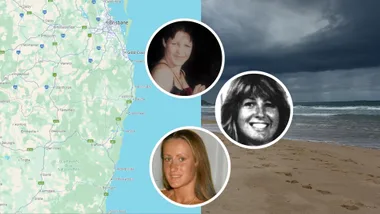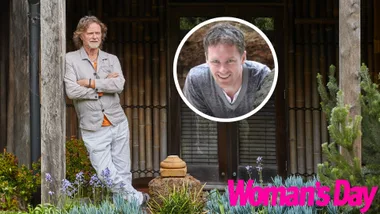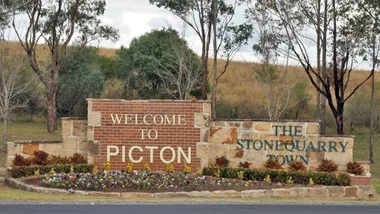Have you ever snorkelled the Great Barrier Reef?
I’m lucky enough to say I have. There’s nothing quite like it – being surrounded by the most luscious and vibrant corals in the world, as stunning exotic fish and sea creatures circle you by. Yup, it’s really no wonder people flock from every corner of the globe to snorkel the largest reef ecosystem on Earth.

^ Paradise
But did you know that the reef, which also happens to be one of the seven natural wonders of the world, is in grave danger?
Sure, you’ve probably heard snippets in the media about the reef being in trouble, but the severity of the situation is pretty damn terrifying. In fact, it’s currently suffering through a severe bleaching event for an unprecedented second year in a row.
The 2016 coral bleaching was the worst on record, with more than two-thirds of corals killed in some areas. And this is the first time bleaching events have occurred in consecutive years.
In short, it’s in trouble. Big trouble.
Coral bleaching – why it’s killing the Great Barrier Reef
Since 1985, the reef has lost 50% of its stunning corals. Although this is due to a variety of cumulative factors, the mass coral bleaching that occurred in 2016 and again in 2017 have been absolutely catastrophic for the reef. 81% of the corals are now bleached, which means they’re at risk of dying.
Bleaching is caused by a severe increase in water temperatures (scientists confirm ocean temperatures are currently rapidly rising due to greenhouse gas emissions) and this causes the corals to turn ghostly white – they’re basically revealing their skeletons. It can then kill the corals.
“Tiny marine algae live inside corals’ tissue and provide corals with the energy they need to grow and reproduce,” explains Dr Dean Miller, Science Director at Great Barrier Reef Legacy.
“In exchange, they’re given a place to live within the coral. But when that coral is bleached, the algae will often die from overheating or simply leave, causing the coral to starve as they’re without their main food and energy source.”
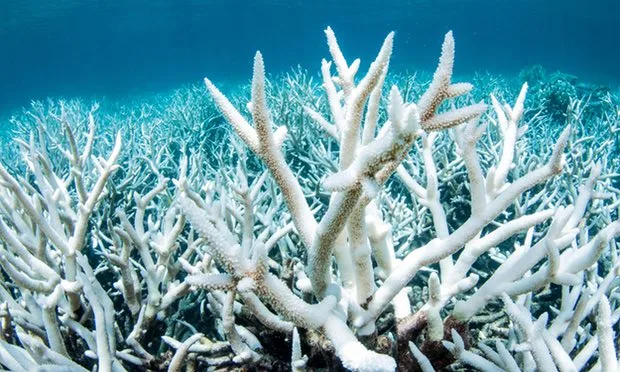
Coral bleaching on the Great Barrier Reef. Credit: The Ocean Agency / XL Catlin Seaview Survey
Dr Miller used a clever analogy to explain its current predicament after the second mass bleaching event (which was particularly helpful for a novice like me!).
“Coral can survive a bleaching but it’s in an extremely bad way. It’s like it’s had cancer and has gone through chemotherapy. It’s not going to want to spawn while in this stressed-out state.”

Credit: The Ocean Agency / XL Catlin Seaview Survey
I travelled to two sites off Port Douglas to assess the damage myself alongside ecologist and Climate Councillor, Professor Lesley Hughes, Climate Council CEO Amanda McKenzie, and Dr Dean Miller and John Rumney from Great Barrier Reef Legacy.

Credit: The Ocean Agency / XL Catlin Seaview Survey
Let’s just say it was a completely different experience to the quick snorkel and boat tour I went on in 2011.
The below footage shows both bleached and dead coral we witnessed on the outer reef, Port Douglas.
Disturbing footage of coral bleaching on the Great Barrier Reef, March 2017
As you can see, that’s a heck of a lot of bleached coral. To see coral that was already dead was particularly difficult. Professor Lesley Hughes summed it up best: it was like a “graveyard”.
Although it’s hard to predict how much will die, the below imagery shows just how fast the process was last year.

What’s being done to protect the Great Barrier Reef?
The reef is stunning, and losing the vibrant corals would be heartbreakingly sad – we can all agree on this.
But it’s also a multi-billion dollar economic asset to boot. According to the Climate Council, its contribution to the Australian economy sits at around 7 BILLION per year and it employs around 70,000 people.
As Professor Hughes notes, some people’s sole reason for visiting Australia is to see the reef. Tourism is, after all, big business. You could say environment IS the economy.
You’d think the government would be up in arms over the damage to the crowning jewel in Australia’s tourism industry, wanting to do anything in their power to prevent further damage.
The current Reef 2050 plan includes a range of measures aimed at improving water quality, managing land use, and updating fishing and shipping regulations.
However, a recent report published in scientific journal Nature states that all of these measures could be futile if the ocean temperatures continue to rise.
The reef is also a UNESCO-listed World Heritage site. It’s currently on UNESCO’s watch list – it could even be upgraded to ‘in danger’ soon.
Professor Hughes doesn’t think UNESCO will be able NOT to put the reef on the endangered list next time officials come to assess.
Interestingly, a few local business-people in Port Douglas seemed reluctant to talk about the bleaching. Which could perhaps mean they’re in denial about the fact this is crisis point – understandable if your livelihood is in danger. Many tourists may not even realise they’re looking at endangered coral that’s going through the bleaching process either.
“It’s also very difficult to look long-term,” says Professor Hughes. “And it’s a completely understandable human reaction to feel powerless when something feels bigger than we are.”
It’s also worth noting this is a worldwide epidemic. Corals have been bleaching continuously across the Pacific Ocean since mid-2014. This should be a worldwide focus.
What will happen to the Great Barrier Reef next?
Um, well, about that…
Nobody actually knows what will happen if/when this ecosystem falls apart. Scientists can hazard a guess and are busy quantifying the impact of the bleaching but “what will actually happen is anyone’s guess,” concludes Dr Miller.
“The coral on the Great Barrier Reef is the building block for biodiversity,” adds John Rumney . “600 different species of coral, two and a half thousand species of fish. You wipe that [the corals] out, you wipe out the food chain they’ll collapse. Fisheries will change. The reef as we know it may never come back if we humans keep polluting as we are.”
“The coral bleaching is a sign,” says John. “We need to heed this warning.”
So, what can we do about coral bleaching?
Climate Council CEO Amanda McKenzie says there are three ways you can help.
1. Use your voice

“This is by far the most important thing you can do. I can’t stress enough how important it is for politicians to hear from people in the community. Whether you’re calling your local member to ask about what they’re doing about the reef or whether you’re simply sharing things on Facebook to alert friends about what’s going on, it’s so, so important. Having those conversations with local, state and federal politicians could be vital.”
2. Use your time

“Think about reducing your own carbon footprint and changing some of your habits like recycling within your home, using less plastic etc. Or, if you have time to do some campaigning, then this is an amazing use of your time to spread the word.”
3. Use your money

“Where do you invest your super and your money? You can invest in more ethical sources that will in turn invest in renewable energy. The Big 4 banks all have big fossil fuel investments but the 5th largest, Bendigo, doesn’t. You can also donate to not-for-profit environmental groups.”
It’s very easy to get despondent about what can be done. After all, there’s not one tangible solution – more a whole host of little things we can all do. But we can help save this global asset and Australian icon. But we need to start caring and sharing now.

